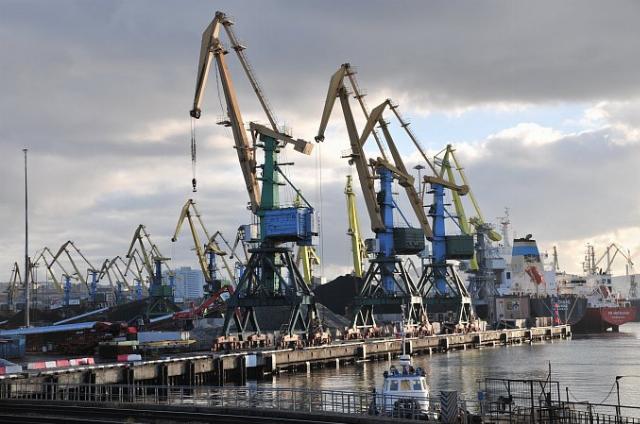Guidelines for the renewal of the civil fleet have been identified in Moscow
The Ministry of Industry and Trade of the Russian Federation presented its vision for the renewal of the domestic civil fleet, indicating as a target the reduction of the average age of ships to 22.5 years from the current 34 years. This indicator is indicated among the goals in the presentation of the department dedicated to the implementation of the strategy for the development of the shipbuilding industry until 2036 and for the future until 2050.
On Monday, November 17, Roman Chekushov, Deputy Head of the Ministry of Industry and Trade of the Russian Federation, presented the strategy at parliamentary hearings in the Federation Council.

Port of Murmansk
Murmansk port
"According to the age of the vessels: today, according to the vessels that are registered in the Russian maritime register, there are 3,600 of them, the average age is 29 years. But already in the Russian classification society, where about 220,000 inland and mixed navigation vessels are registered, the average age is 38 years. That is, up to one and a half thousand dock surveys per register class per year will be required. This will require, of course, huge ship repair facilities," Interfax quoted him as saying.
The basic version of the industry development strategy assumes that, as a result of its implementation, the average age of ships will decrease to 22.5 years (there is also an inertial version in which the average age of ships will be 38 years, which is higher than the current 34 years, and an optimistic one with an average age of 20 years).
The threshold for recognizing a ship as dilapidated and decommissioned in the baseline scenario will be the age of 45, according to the ministry's presentation. The inertial scenario allows for decommissioning after 50 years of operation, while the optimistic scenario allows for decommissioning after 40 years.
Chekushov pointed out the insufficiency of the Russian Federation's own capacities to carry out repairs of operated vessels.
"The challenges and problems facing the industry today are primarily ship repairs. Currently, almost 70% of ships are repaired in other countries, mainly China, South Korea, and Turkey. Of course, the problem lies in the shortage of large-capacity dock facilities of ship repair enterprises and sanctions for the supply of spare parts and equipment. Of course, we need to increase our internal capacities and increase the competitiveness of our ship repair enterprises," he said.
To cover the shortage of ship repair facilities, the official noted, the Russian Federation is currently implementing the USC dock program, the development of a ship repair base in the Kamchatka Territory by Rem-Nova DV, the Atomflot ship repair base, the creation of the Rosmorport ship repair center in the port of Ust-Luga and the GTLK ship repair cluster in the Murmansk Region.
At the end of summer, following a meeting with First Deputy Prime Minister Denis Manturov and Deputy Prime Minister Vitaly Saveliev, the Ministry of Transport, the Ministry of Industry and Trade, the Ministry of Energy and the Ministry of Economic Development were instructed to form and verify, together with shippers, a register of ships that are "decommissioned" and require replacement in subsequent years, and based on its volume, form proposals for extension and expansion. preferential leasing programs for civil vessels.
The Ministry of Transport later reported that it estimated that 1,714 vessels would need to be replaced by 2030.
